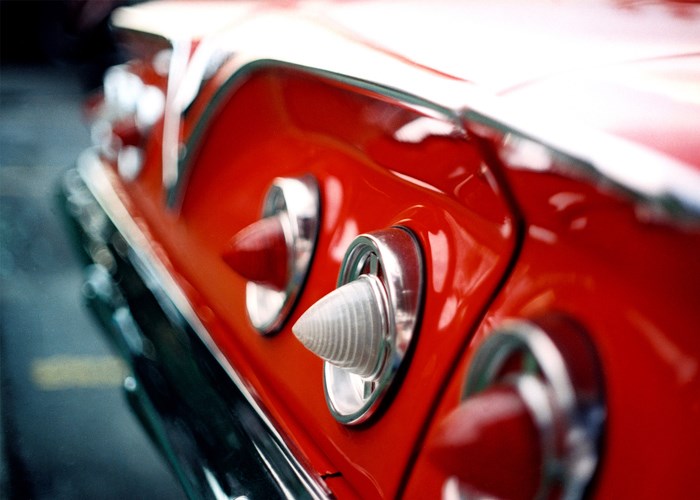If you step outside right now, you’ll notice something rather interesting. The cars are almost always box-shaped. Look at the 2012 Honda Civic, or the 2014 Honda Accord, or even the Toyota Corolla. And for what, safety? No.It must be simplicity. There’s no arguing that most car design from that time, and even now was simple. But it’s for good reason. Let me explain.
In the 1950s automotive design was mostly what cars had going for them. It was a marketable feature that could please the public. These design features were all the rage. In the 1950s, the hard top convertible was introduced to many different models along with other technical features that informed design like the automatic gear box. This kind of design wasn’t just in Canada. See, after World War II, the automotive industry really began to take off from a consumer perspective.
Vehicles made before the 1960s were most certainly the most extravagant in design. Beautiful long hoods and circular headlights with extravagant colours and creative technological innovations lead to some truly amazing creative expression like the '60s Corvette, and the '60s Impala, to name a couple. All of which were affordable automobiles.
In the 1970s manufactures were forced to adapt to the gas crisis and comply with the Clean Air Act. As we know, American cars were anything but economical, which is why we have plenty of Japanese imports, like Toyota and Honda. At this point, the question you may ask yourself is, why did Japan make these small economical cars? Well, the answer lies in the outcome of the war. At the end of the war, Japan was left very badly damaged, economically and geographically which led to the need for cheaper automobiles if they wanted to jump on the bandwagon. And they did. America, on the other hand, had plenty of resources and money for automotive manufacturing, in which case they didn’t need to worry about making things economical. This leads us back to the petrol problem. In 1973 Saudi Arabia placed an embargo on oil which limited the amount of gasoline that could be sold to the public. Japan was able to export its economy cars to meet the demand of the American population. In this piece of history, it’s very evident that circumstance has plenty to do with design and it was now that cars became more utility than art.
In the early 1980s vehicles were being built for functionality more than aesthetics. We also began to see segregation between vehicles which were flashy and stylish, mainly sports cars, and vehicles which were not, mainly economy cars. The focus on functionality led to the decline of passionate design and many consumer vehicles fell into a downward spiral of being rectangular and boring.
Jumping a head to today’s times, the car market is looking up slightly in the way of design. The new push for manufacturers to focus on global warming and our carbon footprint have led to a massive increase in Tesla’s sales and popularity. Tesla really pushes the “laws” of car design with the Cyber Truck as it’s very abstract and interesting. Hyundai have really been pushing the laws of design as well with it’s new lineup of 2022-23 vehicles and this is proof that maybe one day very soon, not all car parks will look like a bunch of rectangles in a grid.
A recent transplant to Thompson, Jay Hurley is a freelance columnist with a focus on cars, lifestyle and culinary arts. He is from Ontario and studied broadcast and contemporary media.




